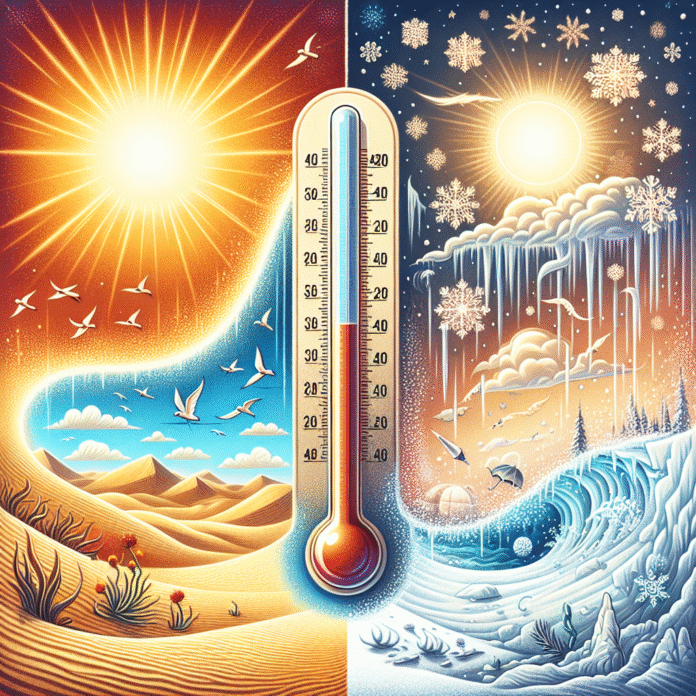Sweating to Shivering Study Reveals Temperature Swings Have Intensified
Sweating to Shivering: Study Finds Rapid Swings in Temperature Have Increased
A recent study has highlighted a concerning trend: the frequency and intensity of rapid temperature fluctuations are on the rise. Researchers have observed that these swift changes, which can swing from extreme heat to cold in a short span, have significant implications for both human health and environmental stability.
The study, published in a prominent scientific journal, analyzed temperature data over several decades, revealing that regions across the globe are experiencing more pronounced temperature swings. These fluctuations can pose serious health risks, especially for vulnerable populations such as the elderly, children, and those with pre-existing medical conditions. For example, sudden heatwaves can exacerbate respiratory and cardiovascular issues, while abrupt drops in temperature can lead to hypothermia or other cold-related ailments.
Furthermore, the impact of these temperature variations extends beyond human health. Agriculture, for instance, is increasingly at risk as crops may be unable to adapt to such rapid changes. Farmers could face reduced yields due to heat stress or frost damage, affecting food supply chains and pricing.
Contributing Factors
Several factors contribute to these increased temperature swings. Climate change remains the primary driver, with greenhouse gas emissions leading to unstable weather patterns. Urbanization also plays a role, as cities create “heat islands,” where temperatures are significantly higher than in surrounding areas. This phenomenon, combined with global warming, exacerbates the frequency of extreme heat events.
In addition, changes in ocean currents and atmospheric conditions can lead to more erratic weather. For instance, phenomena like El Niño and La Niña can trigger shifts in temperature and precipitation patterns, resulting in more pronounced swings.
Implications for Policy and Adaptation
The study underscores the urgent need for policymakers to address these challenges. Mitigation strategies, such as reducing carbon emissions and investing in green infrastructures, are essential to curbing future temperature swings. Furthermore, adaptation measures, including improved public health responses and climate-resilient agricultural practices, are crucial to safeguard communities against the impacts of these fluctuations.
In conclusion, as rapid swings in temperature become more common, it is vital for individuals, governments, and organizations to acknowledge and address the consequences of these changes. By understanding the underlying causes and implementing proactive measures, society can better prepare for the health and environmental challenges posed by our increasingly unstable climate.


